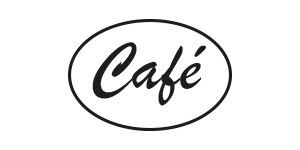Introduction
Large corporations understand that changes to their IT, organisation, processes or setup is complex and they use Enterprise Architecture (EA) to manage such challenges.
Small and medium-sized enterprises (SMEs) as well as charities face similar complexities and related issues. They too need to manage change, thus also require Enterprise Architecture. At the same time, they face two challenges if they follow the same approach as big businesses, namely:
- The framework – Typical EA frameworks are too complex and costly for SMEs.
- The people – Employing fulltime Enterprise Architects is expensive and they may not be fully utilised.
However, SMEs can overcome both challenges. They do not need a complex framework and highly experienced EAs to achieve the benefits of Enterprise Architecture.
A minimum Enterprise Architecture framework for smaller enterprises
For SMEs to implement Enterprise Architecture in a practical and cost-effective way, they should address the following five points:
1. The business map (and other viewpoints)
Every organisation needs a single map of all the “things”, which m
ake up the business. These are typically stakeholders, processes, technology and information. The resulting big picture acts as the agreed model for the company as a whole, as a reference point and shared mental model.
The business map allows managers to discuss changes to the business, whether an IT system replacement, new services offerings or changing processes. Based on this map, the impacts of seemingly simple changes on other parts of the business can be identified and discussed. At the same time, the business map provides an overview. There is no need for elaborate detail.
There can be several versions of the business map. There can be a map version fitting on a single A3 sheet of paper used in meetings or business map with more detail to be displayed on office walls.
 Other diagrams can be developed as and when required such as process maps, data models and interface diagrams.
Other diagrams can be developed as and when required such as process maps, data models and interface diagrams.
2. EA Method
In principle, the EA method defines how the Enterprise Architect works alongside other management functions. Like large organisations, SMEs have established processes for product development, project management or other occasions. These should be extended to include Enterprise Architecture. There is no need to re-invent the wheel by creating a new set of EA processes.
 The extension of the processes should be focussed on providing insight into the impacts of change. This will support executives and senior managers to make well-informed and thus better decisions. This is the value of Enterprise Architecture.
The extension of the processes should be focussed on providing insight into the impacts of change. This will support executives and senior managers to make well-informed and thus better decisions. This is the value of Enterprise Architecture.
3. Staff with skills and roles
EAs do not necessarily need to be highly trained and skilled professionals with decades of experience gained on the battlegrounds of successful as well as failed IT projects. Familiarity and knowledge of a specific business and its environment can partly compensate experience and knowledge. This opens the possibility to use existing staff to fill the EA role.
Such an existing staff member must be curious, creative and structured in their thinking with a strong desire to understand how the organisation fundamentally works. They also need sufficient gravitas to gain the respect of senior colleagues. However, they do not need to be an IT specialist or specialist of any kind. EAs are generalists.
Many organisations already have someone – perhaps a business analyst, an accountant or a logistics manager – with these qualities. With a tool, a mandate and perhaps some guidance, this person can easily move into the Enterprise Architect role.
4. A Tool
There is no need for a sophisticated Enterprise Architecture tool, which supports collaboration and produces diagrams at the push of a button when there is only one Enterprise Architect. The journey can easily start with a spreadsheet and a diagramming tool such as MS Visio.
Once the benefits of Enterprise Architecture become apparent, other staff will take an interest. There will be a demand to use the same information and produce similar outputs. At such time, a better tool becomes necessary. Here too, there will be another article, describing what SMEs should look for when planning to get an EA tool.
5. Modelling Guidelines
An internal Enterprise Architecture function should have a commonly defined way to record elements, create diagrams and to define EA documents. Such guidelines act as a role description for the Enterprise Architect.
At the same time, a version of this description can be used to educate other staff, allowing them to read, understand and interpret EA diagrams and documents. At a minimum, modelling guidelines should cover:
- Diagrams – Description of standard diagrams, how to interpret them plus examples. This includes the business map as well as system interface diagrams or process diagrams.
- Documents – Outline and purpose of the standard documents. They might include impact assessments, high-level designs or plans.
Would you like to introduce Enterprise Architecture into your smaller organisation? If so, we can help. Please get in touch for a confidential and non-obligatory conversation.

